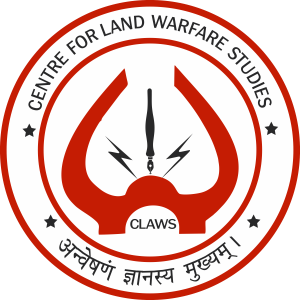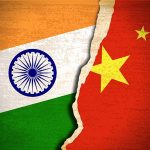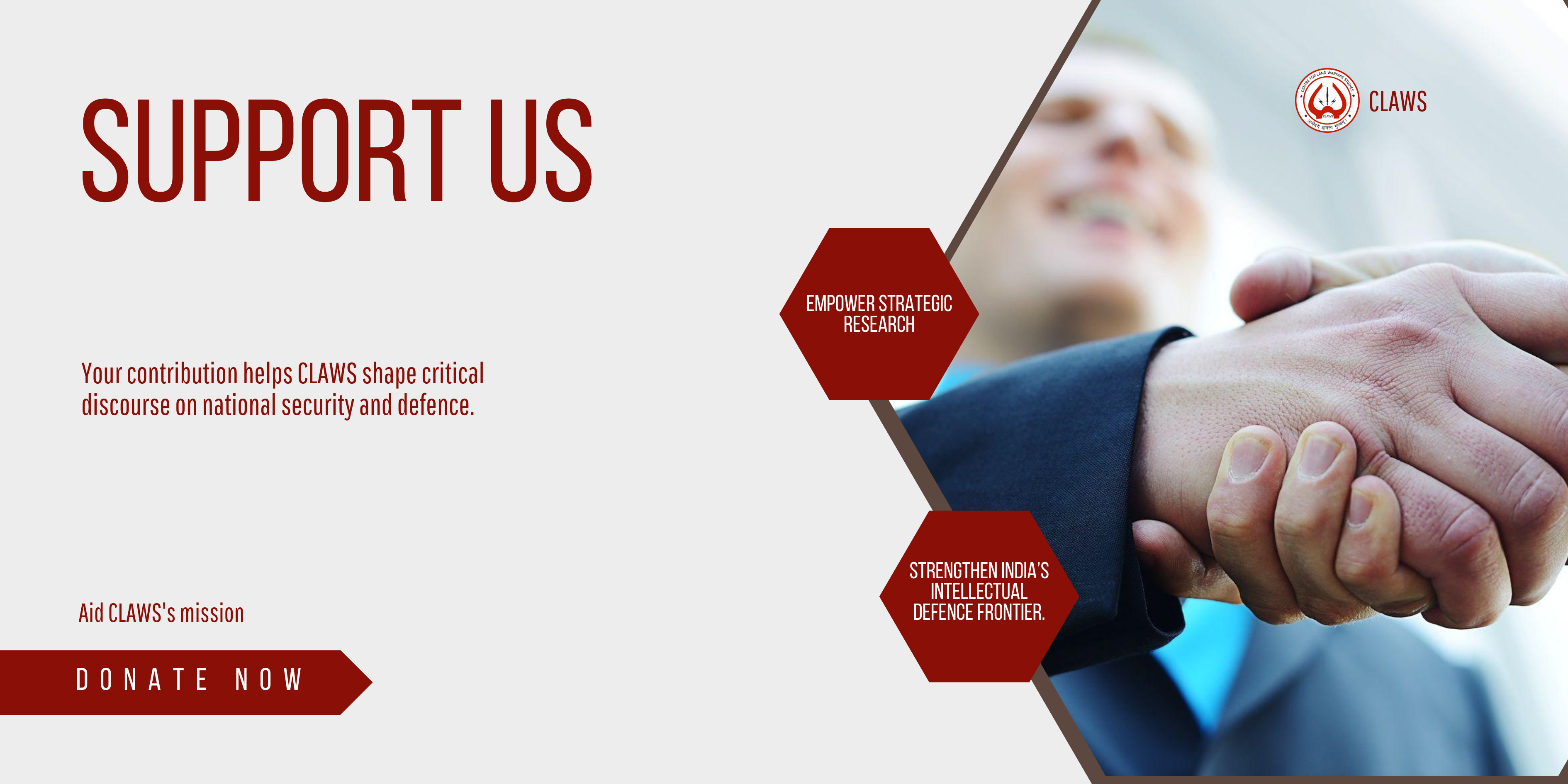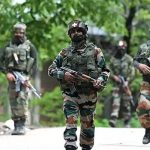Having applied for full membership 15 years back, Iran is set to sign a Memorandum of Understanding to become a permanent member of the Shanghai Cooperation Organisation (SCO) in its 22nd summit meeting being held during 15-16 September.[i] While its application for full membership was accepted last year, the formalisation process will begin this year onwards. Interestingly, this is also the time when the US and Iran are discussing the fate of the latter’s nuclear deal, which was stalled since May 2018 when the US withdrew from the Joint Comprehensive Plan of Action (JCPOA).
Being at crossroads with both Russia and China, it is apparent that the US will be watchful of Iran’s admission to the Eurasian Organisation headquartered at Beijing. It is noteworthy that the US faces congressional resistance on revising the nuclear deal with Iran and one of the many demands raised is that the latter limits its engagement with Beijing especially with regard to military cooperation and excessive funding.[ii] Under such domestic scrutiny, it is apparent that Iran’s approval for permanent membership to the SCO will have certain implications on its ongoing revival of the nuclear deal. In such circumstances, Iran is likely to be careful to not rub off the US the wrong way.
While one may argue that Tehran’s inclusion to the Eurasian grouping may not be as controversial as it is speculated given that India is also part of the same organisation. However, Iran is not India! The latter is known for its non-aligned foreign policy since its independence which later culminated into strategic autonomy. Being the proponent for a middle path, India has not antagonised either of the blocs but has maintained a balancing act vis-à-vis both.
Iran on the other hand has been critical of the Western bloc especially under the current hardliner regime headed by President Ebrahim Raisi. Secondly, Iran for long has been allegedly tagged as aspiring for expansionist agenda akin to Russia and China and moreover its membership to the SCO will make the multilateral a rather authoritative grouping with the exception of India.[iii] And that in itself attests towards becoming an anti-West multilateral. In such an embroiling situation while one may argue if India will be rethinking its SCO membership, the moot question is what will the multilateral achieve by including a sanctioned and diplomatically isolated Iran, more so, if the nuclear deal fails to fructify and Tehran is unable to lift its economic constraints? Second aspect which is worth pondering is what does Iran benefit from its permanent membership to the world’s largest regional organisation?[iv] In short, what compels Iran to Look East?
‘Maximum Pressure’ approach propagated by Trump administration has drastically crumpled Iranian economy which has been plummeting at an all time low with an estimated 4.99 per cent shrinking in 2020. Incessant sanctions have also lowered Iran’s ability to sell oil and have prevented the country from repatriating money from energy sales. Additionally, the International Monetary Fund’s (IMF) estimates that Iran fell into a trade deficit of US$3.45 billion in 2020. The global pandemic which hit Tehran excessively further deteriorated the country’s economic infrastructure.[v]
Iran’s admission to the SCO notwithstanding, West Asian economies looking East is the new trend! By June and July, as stated by China’s media mouthpiece Global Times, as many as five West Asian countries, namely Egypt, Iran, Saudi Arabia, Turkey and the UAE, applied for another multilateral forum, BRICS (acronym for Brazil, Russia, India, China and South Africa).[vi] While at one level, it reflects global integration through these multilateral organisations, however, at another, it shows the West Asian economies’ willingness to join the Chinese and Russian camps[vii] despite their long-term alliance with the US. As touted by Chinese media mouthpiece, more applications to the BRICS suggest that “the world needs fairer governance than West-dominated one”.[viii]
This only ascertains the countries growing bonhomie with the East. As far as Iran is concerned, in mid-July, that is, right after the conclusion of I2U2 (acronym for India, Israel, UAE and US) summit, Tehran had hosted Moscow and Ankara to discuss reshaping the region.[ix] This further affirms Iranian tilt towards the Eastern brigade despite Russia’s predictable diplomatic isolation in the aftermath of its conflict with Ukraine and China’s longstanding tussle with the US.
For Russia and China, Iran’s permanency to the SCO not only ascertains a like-minded addition to the brigade (minus India) but its inclusion also ascertains the proper functioning and usage of the strategic trade corridor, namely, International North South Transport Corridor (INSTC). Iran’s geostrategic location passing through INSTC makes it an unavoidable partner in the trade corridor initiative. Likewise, such partnership is in Iranian interest to boost its economy and to enhance its outreach towards Central Asia and Far East. Secondly, for the sake of Afghanistan reconstruction, a comprehensive SCO including Iran, a country which has strategic interests in the South Asian economy, is likely to build better results provided it is used significantly for the purpose.[x] India must look at this opportunity and engage with Iran on this aspect especially keeping in mind its strategic port development at Chabahar.
Thus, with increased economic and commercial investments and profit margins being the primary concerns for a sanctioned Iran, joining hands with the East through SCO permanent membership is seemingly a safe bet with maximum cost-benefit resultant. However, joining the East brigade against the West is an aspect which cannot be ruled out when it comes to the Persian state.
[i] “Iran set to sign memorandum to become SCO member”, Tehran Times, 11 September 2022, available at https://www.tehrantimes.com/news/476649/Iran-set-to-sign-memorandum-to-become-SCO-member, accessed on 14 September 2022.
[ii] Manjari Singh (2022), “Iran Nuclear Deal and the ‘Final’ Proposal: A longstanding quandary with seemingly no immediate solution”, CLAWS Focus, 19 August, available at https://www.claws.in/iran-nuclear-deal-and-the-final-proposal-a-longstanding-quandary-with-seemingly-no-immediate-solution/, accessed on 14 September 2022.
[iii] Seth J. Frantzman (2022), “Russia pushes for authoritarians to join Shanghai Cooperation Organisation – Analysis”, The Jerusalem Post, 11 September, available at https://www.jpost.com/international/article-716877, accessed on 14 September 2022.
[iv] In terms of geography, economic scope and population, the SCO is the world’s largest regional organisation with 60 per cent aerial coverage, 40 per cent global population and 30 per cent world’s GDP.
[v] Abigail Ng (2021), “These 6 Charts show how sanctions are crushing Iran’s economy”, CNBC, 23 March, available at https://www.cnbc.com/2021/03/23/these-6-charts-show-how-sanctions-are-crushing-irans-economy.html, accessed on 14 August 2022.
[vi] “More countries knocking on BRIC’s door a sign the world needs fairer governance than West-dominated one”, Global Times, 16 July, available at https://www.globaltimes.cn/page/202207/1270661.shtml, accessed on 14 September 2022.
[vii] Both China and Russia’s permanent membership at the UN Security Council gives them an edge over India and other full members of these multilateral organisation.
[viii] n. 6.
[ix] Seth J. Frantzman (2022), “Iran-Russia-Turkey meetings in Iran aim to reshape region – analysis”, The Jerusalem Post, 20 July, available at https://www.jpost.com/international/article-712613, accessed on 14 September 2022.
[x] Manjari Singh (2021), “India-Iran Relations and the Afghanistan Factor”, CLAWS Journal, Vol. 15, No. 2, pp. 125-133, available at https://www.neliti.com/publications/370285/india-iran-relations-and-the-afghanistan-factor#cite, accessed on 14 September 2022.














